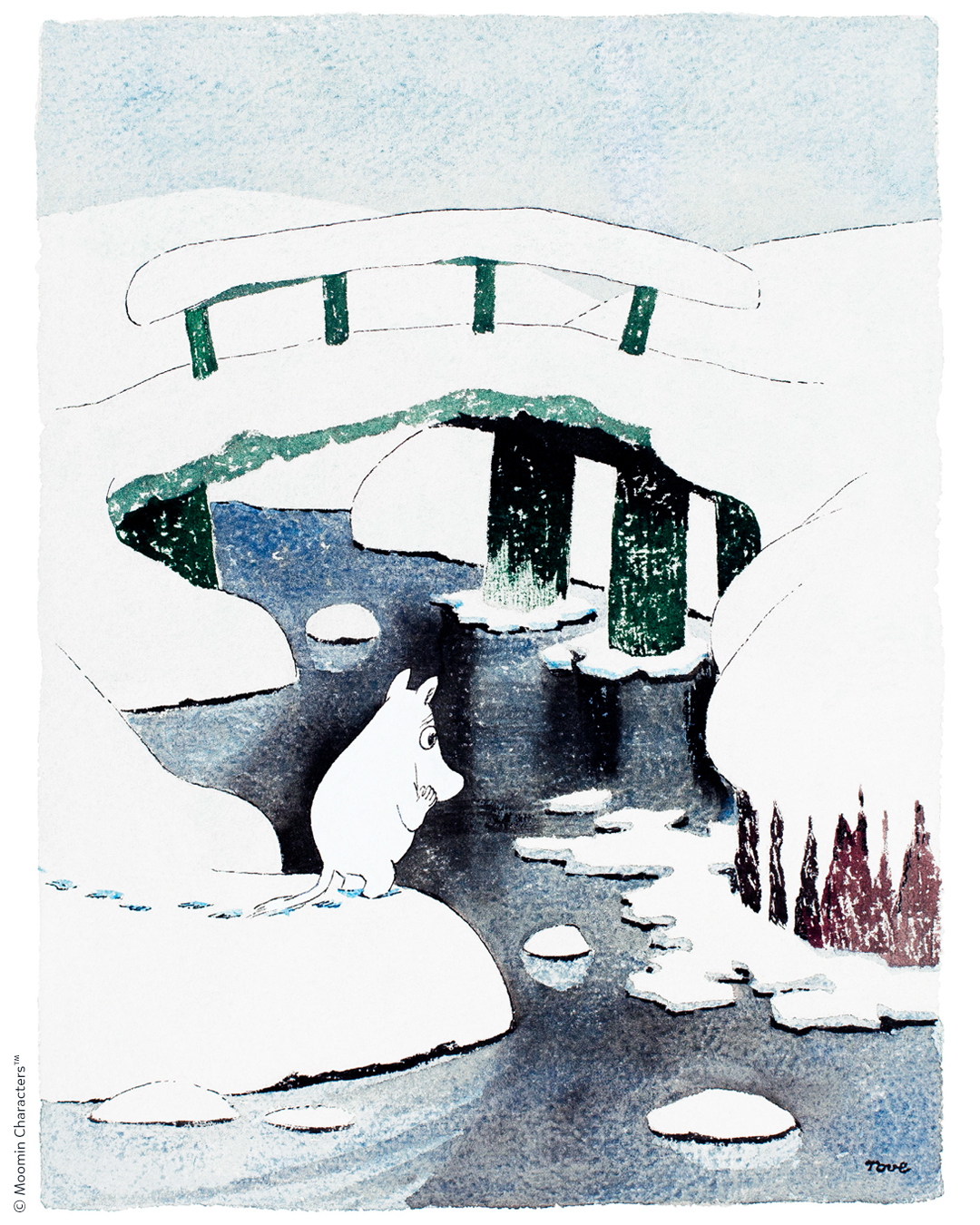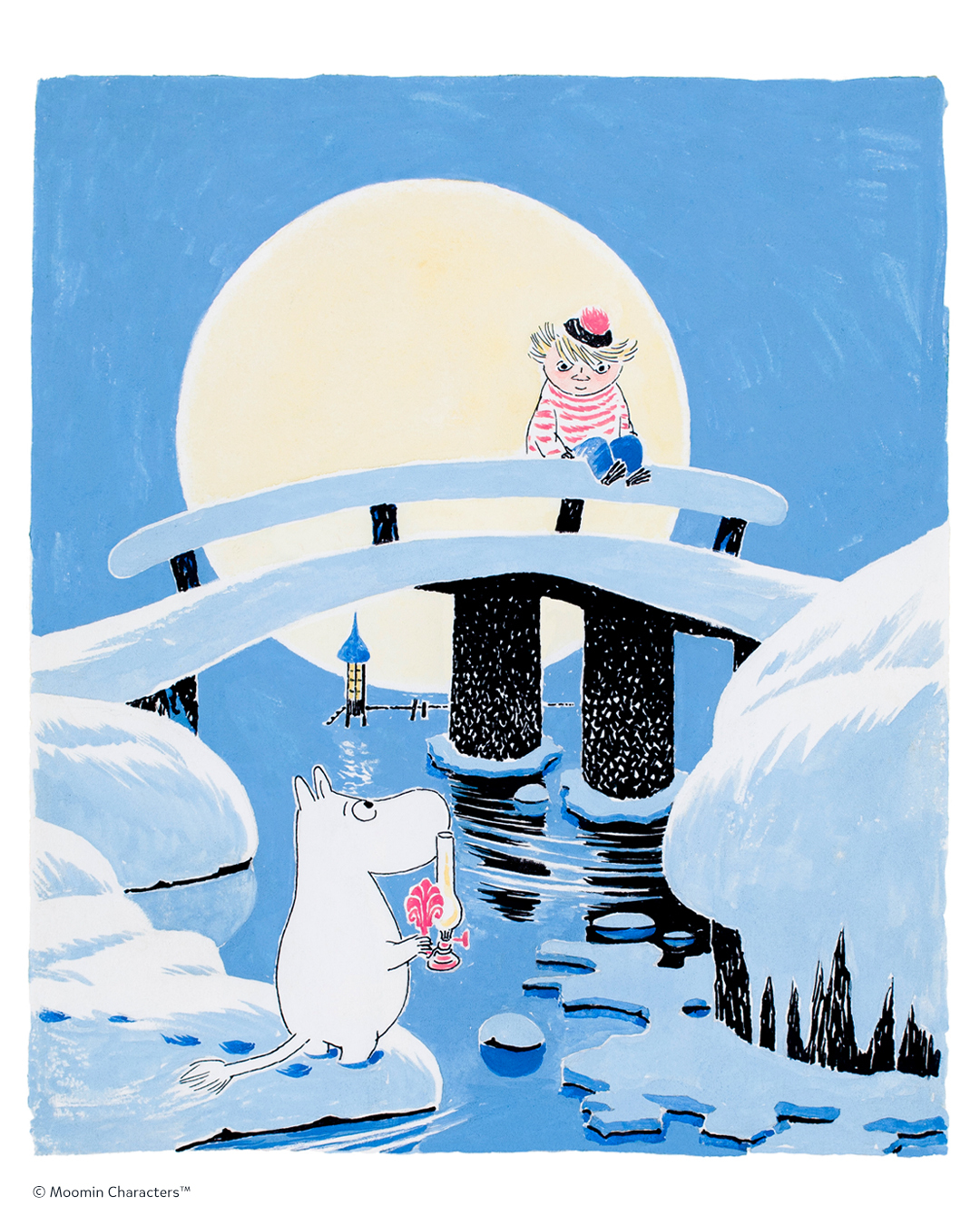In the Moomin novel Moominland Midwinter, originally published in 1957, the images were black and white, but in 1961 Tove Jansson created colour illustrations for the Italian edition of the book. In 2021, Sort of Books published an English edition of the book in four colours with magical illustrations that are bursting with colour and ice-clear emotion.
In Moominland Midwinter, Moomintroll wakes up from his hibernation while the rest of the Moomin family sleeps on. He is greeted by a cold, alien world.
“The sky was almost black, but the snow shone a bright blue in the moonlight. The sea lay asleep under the ice, and deep down among the roots of the earth all small beasts were sleeping and dreaming of spring. But spring was quite a bit away because the year had only just got a little past New Year..”
Moomintroll is introduced to snow for the first time, something his family has only heard about before:
“A wave of cold air received him. He lost his breath, slipped and rolled over the edge. And so Moomintroll was helplessly thrown out in a strange and dangerous world and dropped up to his ears in the first snowdrift of his experience. It felt unpleasantly prickly to his velvet skin, but at the same time his snout caught a new smell. It was a more serious smell than any he had felt before, and slightly frightening.”
Different versions for different editions
Tove Jansson was often actively involved in the design of different editions of her books. For some books, she made models where she drew the entire book page by page. She planned both the placement of the pictures and the text on the cover and had a keen eye for typography.
Jansson often created new covers for various translations of her books, sometimes going so far as to draw new pictures for the bindings as well. The novel The Summer Book, for example, originally had no pictures because Jansson did not want it to be perceived as a children’s book, but she later agreed to draw several illustrations at the request of a publisher.
Another book for which Jansson created specially commissioned images is Moominland Midwinter, where in 1961 she created a set of colour images for the Italian edition published under the name Magia d’inverno. The original Swedish-language edition, printed by Centraltryckeriet in Helsinki, had 71 pen and ink drawings, all in black and white.
The Italian edition was given a different cover image than the original Swedish edition, a revised colour version of the illustration on page 29, where Moomintroll encounters “someone who lay looking up at the serene winter sky and whistling very softly to herself. ”
This someone is Too-ticky, who turns out to be a very central character.
The colourful windows of the bathhouse
In the Italian edition, readers can see the glass panes of the bathhouse’s coloured windows come to life in different shades of fuchsia and green. The working name of the book was actually linked to the bathhouse – the book manuscript was long referred to as The Enchanted Bathhouse.
And indeed, the bathhouse is central to the plot – this is where Too-ticky resides with a group of invisible mice. In her, Moomintroll gets a kind of wintry mentor, who, with her calm and confident voice, teaches him about the realities of winter life:
“There are such a lot of things that have no place in summer and autumn and spring. Everything that’s a little shy and a little rum. Some kinds of night animals and people that don’t fit in with others and that nobody really believes in. They keep out of the way all the year. And then when everything’s quiet and white and the nights are long and most people are asleep – then they appear.”
Italian edition of Moominland Midwinter – a coming-of-age novel in four colours
In Moominland Midwinter, Moomintroll has to cope for the first time without the safe presence of his family – they are consequently in the Moominhouse, but snoring their way through the long winter, warmly tucked up in their beds. The book can be seen as a kind of coming-of-age story where Moomintroll has to learn to fend for himself in a strange and sometimes inhospitable environment.
Over the course of the winter, Moomintroll encounters all sorts of new and frightening phenomena such as blizzards, wild midwinter bonfires, an over-enthusiastic winter sports enthusiast and, not least, the terrifying Lady of the Cold.
“Far out on the ice came the Lady of the Cold. She was pure white, like the candles, but if one looked at her through the right pane she became red, and seen through the left one she was pale green.”
The dead squirrel and the ice maiden
Too-ticky has taught Moomintroll that it is absolutely forbidden to look straight at the Lady of the Cold, but a little squirrel does just that, looking into her cold blue eyes. In the Lady of the Cold’s tracks, “the foolish little squirrel lying stiff and numb with all his paws in the air”, and despite attempts to revive him in the bathhouse, his little legs are “just as sadly and stiffly in the air“. “Too bad” says Too-ticky, and Moominvalley’s truth-teller Little My is quick to agree.
“He’s quite dead,” said Little My matter-of-factly. “At least he saw something beautiful before he died,” said Moomintroll in a trembling voice. “Oh, well,” said Little My. “In any case he’s forgotten it by now. And I’m going to make myself a sweet little muff out of his tail.”
Moominland Midwinter describes death prosaically and poetically
They discuss funeral arrangements and appropriate mourning attire, and whether you can be expected to enjoy your tail if you are dead. Moomintroll takes offence and tells the others to stop talking about the squirrel being dead, because he thinks it’s so awful. Too-ticky gives him a prosaic and poetic answer, comforting yet not trying to embellish what has happened.
“When one’s dead, then one’s dead,” said Too-ticky kindly. “This squirrel will become earth all in his time. And still later on there’ll grow trees from him, with new squirrels skipping about in them. Do you think that’s so very sad?”
“An ill-fated end is not ‘fair play’”
Tove Jansson was convinced that one could and should write for children also about grief, death and disasters. But she had certain rules of behaviour, which she outlined in her essay The Deceitful Writer of Children’s Books, and developed further in her acceptance speech when she was awarded the Hans Christian Andersen Award for her contribution to children’s literature in 1966.
“The author owes a particular debt to the reader: a happy ending, that is, a happy ending in some way or another. Or at the very least, the child should be left with a chance to construct it for itself. The reading child will naturally have identified with the main character, and an ill-fated end is not ‘fair play’.” For Jansson, it was crucial that the child received some form of comfort and was not left alone with the feelings the author had brought to life.
Do not kill the person the child has identified with
“One can of course write about death, the most final thing of all, but not kill that which a child has identified with. Choose someone less important or someone of whom there are many.”.
In Moominland Midwinter, the author follows her own advice, because after Too-ticky’s statement there is a small asterix with the following text:
“ In case the reader feels like having a cry, please take a quick look at page 152. Author’s Note.”
Sort of Books published an English edition with the coloured illustrations in 2021. Dive into the beautiful book to find out what’s on page 152 – as usual with Tove Jansson, there are possibilities for different interpretations.
Read more about the different editions of the Moomin books by Tove Jansson:
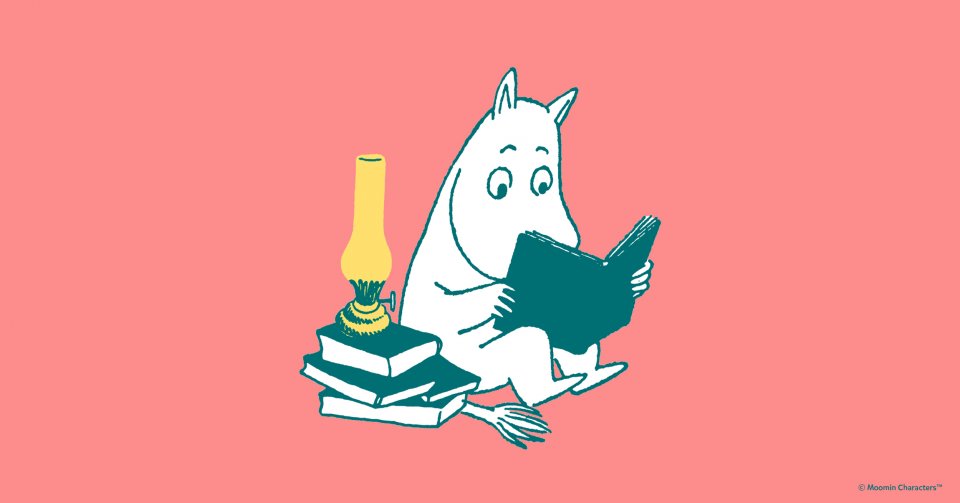
A treasure trove of Moomin book quotes for every moment of life
Explore a curated collection of Moomin quotes within the themes of friendship and love, adventure, resilience, celebration, and joy.
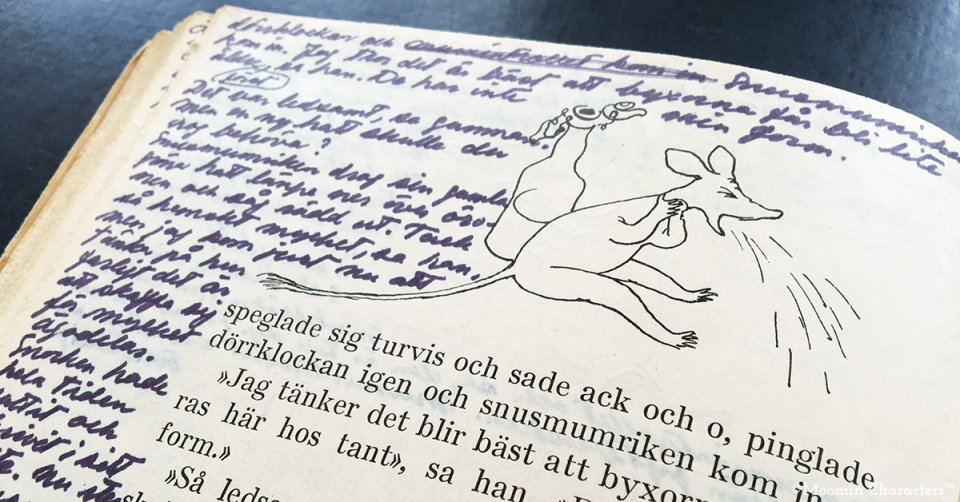
Archive treasures: Tove Jansson’s notes for the upcoming edition of her Moomin book
Tove Jansson’s notes on the Comet in Moominland book highlight her creative process when writing and illustrating the Moomin books.
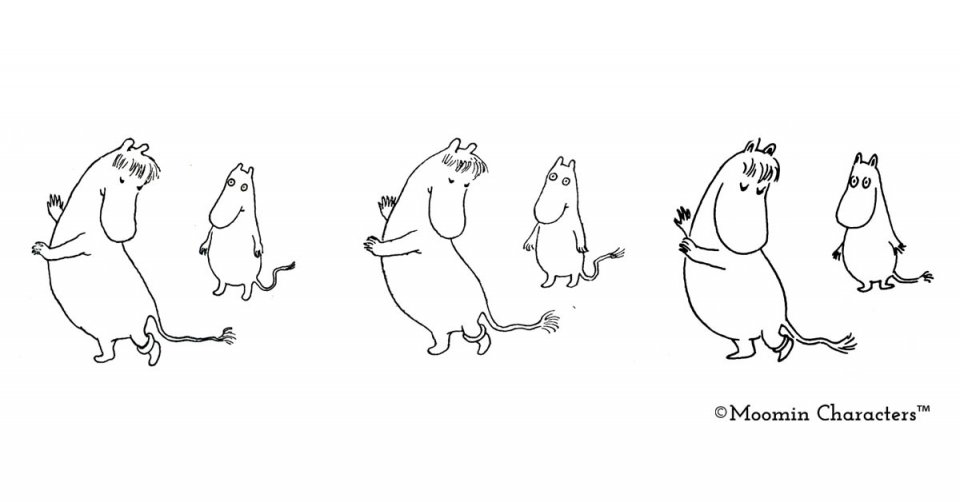
How Tove Jansson’s drawing style and the Moomins developed over the decades
Did you ever notice how Tove Jansson drawing style changed over the years? Find out how Moomins evolved along their author’s style.

